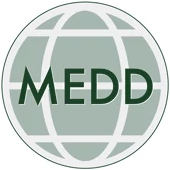Heart Failure Guidelines Explained – Dr John Hayes from St Andrew’s War Memorial Hospital

Considerations for General Practitioners Seeing Heart Failure Patients
Heart failure (HF) affects almost half a million adults in Australia, with this number projected to increase to 650,000 by 20251. Heart failure causes substantial morbidity and mortality and is a considerable burden on healthcare. The annual cost of heart failure is estimated at $3.1 Billion per annum including $2.0 Billion on hospitalisation for heart failure2. The impact on a patient’s quality of life is also significant.
Heart failure is a complex group of symptoms that often presents as:
- Exertional dyspnea;
- Orthopnoea;
- Paroxysmal nocturnal dyspnea; and
- Fatigue.
Specific signs that can usually be elicited in patients are:
- decreased exercise tolerance;
- swollen legs and ankles;
- an elevated jugular venous pressure;
- hepatojugular reflux;
- third heart sound (s3); and
- laterally displaced apex beat.
Against this backdrop of clinical signs and symptoms, HF may be categorised as to whether it is associated with:
– A reduced left ventricular ejection fraction (LVEF) below 50% (HFrEF); or
– A preserved LVEF of 50% or more (HFpEF)3.
Dr John Hayes, Cardiologist and Electrophysiologist, from the Queensland Cardiovascular Group shares his views on the role of cardiac devices, particularly Cardiac Resynchronisation Therapy (CRT) devices in the management of HF as per the most recent guidelines.
“Bi-ventricular resynchronisation devices can provide a good adjunct therapy to optimal medical therapy in patients with heart failure medical therapy.” Dr Hayes states.
Cardiac Resynchronisation Therapy is provided by state-of-the-art cardiac devices that provide biventricular pacing in eligible heart failure patients. Therapy is delivered via three leads implanted in the heart, one to the right atrium and one to the right ventricle. The third lead is implanted via the coronary sinus and placed to the lateral wall of the left ventricle. This allows the dyssynchronous left ventricle and right ventricle to be stimulated together promoting a synchronous contraction of both ventricles, improving the pumping mechanism of the heart. Once the leads are in place they are connected to a device that sits inside a subcutaneous pocket within the anterior chest region.
Cardiac Resynchronisation Therapy devices may also have inbuilt cardioverter defibrillators to detect and terminate life threatening arrhythmias, such as Ventricular Tachycardia and Ventricular Fibrillation.
The most recent guidelines make several recommendations regarding CRT. Key recommendations are:
- CRT is recommended in HFrEF patients with sinus rhythm, LVEF of 35% or less, and QRS duration of 150 milliseconds or more who are on optimal medical therapy to decrease mortality, hospitalisation, and severity of symptoms3.
- When the QRS duration is 130-149 milliseconds, all of the above stands true but CRT “should be considered” instead of “is recommended.” (strong recommendation, moderate quality of evidence).
- When the QRS duration is less than 130 milliseconds, CRT is contraindicated for lack of efficacy and the risk of harm. (strong recommendation against, moderate quality of evidence).
If General Practitioners were to keep one major criterion in mind, as a gold standard, when deciding to refer a patient to a cardiologist for CRT, it would be an ejection fraction less than 35%. As Dr Hayes points out:
“Although CRT can be very effective at improving heart function as measured by an improved ejection fraction, there are well-defined eligibility criteria as it may not benefit every heart failure patient. There are many aetiologies of heart failure and depending on the cause, a patient may benefit more from, for example, a coronary revascularisation procedure. The foremost consideration would be to establish whether patients are otherwise receiving optimal management, with respect to both the underlying cause of the heart failure and medical therapy. Given that is CRT is an invasive modality, medical therapy options need to be exhausted first.”
“According to the evidence-based guidelines, we must firstly establish that the patient is on appropriate medical therapy before considering invasive procedures. There are a number of classes of medications that have proven prognostic benefit including vasodilator therapy, beta-blockers and spironolactone therapy. Diuretics are very useful for symptomatic control.
”If following optimisation of medical therapy for three to six months, the ventricle remains weak with an ejection fraction less than 35%, we should consider other treatment options, including device therapy with CRT, and possibly with defibrillation options.”
Comorbidities also play a factor in the assessment of optimal care:
“We have to look at their comorbidities and their other illnesses. We need to be sensitive to the patients’ and their relatives’ needs. If it was somebody who is debilitated in a nursing home, we may decide that we will just continue with the medical therapy. As cardiac electrophysiologists, we deal with rhythm problems, implanted devices and their ongoing management. I think we’re very fortunate in Australia. We have a wonderful healthcare system and we have wonderful general practitioners and cardiologists. Together we can make a real impact on patients’ lives and outcomes.”

The Queensland Cardiovascular Group in partnership with the St Andrew’s War Memorial Hospital pioneered CRT in Queensland in 1998. In 2018, The Queensland Cardiovascular Group implanted 600 pacemakers or defibrillators, of which 150 were CRT devices.
Dr John Hayes is a Cardiologist and Electrophysiologist who works at the Queensland Cardiovascular Group. Dr Hayes practices at St Andrews’ War Memorial Hospital and also at the Holy Spirit Northside Hospital in Brisbane. To learn more about Dr John Hayes and our cardiologists at Queensland Cardiovascular group, visit the website: https://qcg.com.au/
Authored by: Ellie Bakker and Shane Bassett, Connect The Docs. Connect The Docs is a Medical Communications Agency in Australia.
Sources:
1. Chen, Mary McKillop Institute of Health Research. Australian Catholic University. Melbourne, Australia. (2017)
2. Australian Catholic University – Mary MacKillop Institute for Health Research
Recommend0 recommendationsPublished in Latest News





